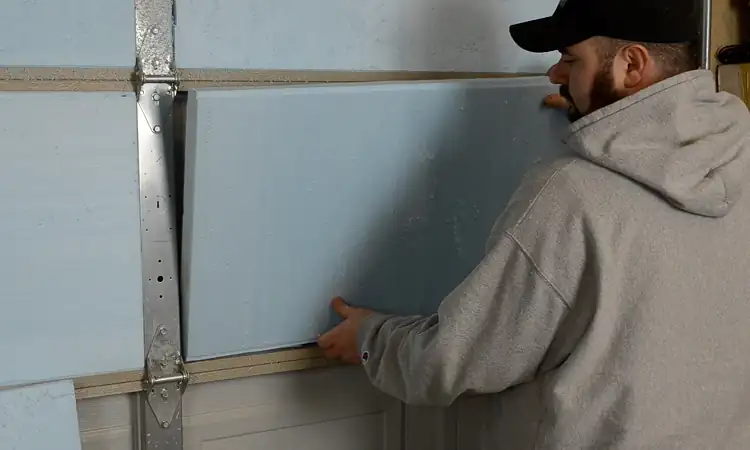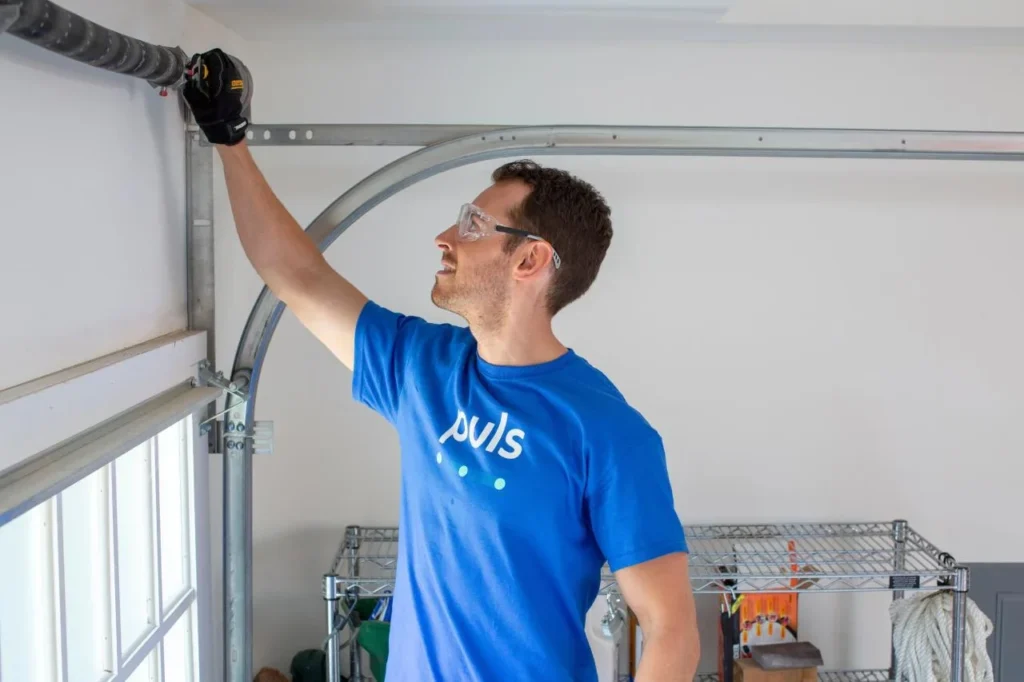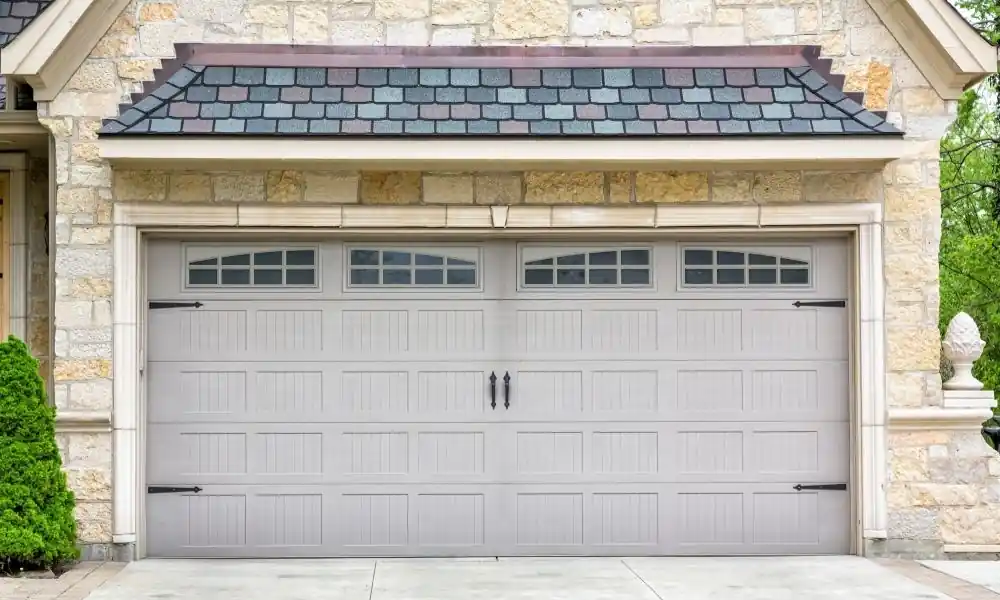Do you want to make your home more energy efficient and have a better garage space? A great way to do this is by installing an insulated garage door.
There are many options for insulation, so picking the right type for your needs is important. In this easy guide, we will look at the top 10 best garage door insulation solutions to improve your garage’s energy efficiency and comfort.
Key Highlights
- Enhance your home’s energy efficiency and keep your garage comfortable year-round with proper insulation.
- Explore the top 10 garage door insulation solutions, each offering unique advantages and drawbacks.
- Consider factors like R-value, material type, ease of installation, and budget when making a selection.
- Learn essential installation tips for a successful DIY project, ensuring optimal insulation performance.
- Discover the benefits of each insulation type, from reflective foil’s radiant heat blockage to foam board’s high insulation value.
10 Top Best Garage Door Insulation Solutions for Enhanced Efficiency

Choosing the right insulation for your garage door can be hard. To make it easier, we have put together a list of the top 10 garage door insulation options.
We will look at different types, like reflective foil, foam, and batt insulation. You will learn about their advantages, disadvantages, and the best places to use them. Understanding these details will help you pick the best insulation. This will make your garage door more comfortable and energy efficient.
1. Reflective Foil Insulation for Minimizing Heat Transfer
Reflective insulation, also known as radiant barrier insulation, helps reduce heat transfer by reflecting heat away. It is made of materials like aluminum foil combined with paper or plastic. This type of insulation is effective at reflecting radiant heat. When it faces an air space, reflective foil insulation stops heat from coming in during summer and keeps heat from escaping in winter.
Homeowners in warmer areas really benefit from this insulation because it can lower cooling costs. It helps keep garages much cooler in hot summers by bouncing the sun’s radiant heat away from them.
However, it’s important to know that reflective foil insulation mainly fights radiant heat. So, relying only on this insulation might not be enough in colder areas or for dealing with heat loss through conduction or convection.
2. Foam Board Insulation for a Tight Energy Seal
Foam board insulation is a great choice for keeping homes energy-efficient. It offers good thermal resistance and helps create a strong energy seal. These rigid panels are usually made from materials like polystyrene, polyurethane, or polyisocyanurate. They reduce energy costs by cutting down heat transfer.
These boards are very lightweight and easy to install. Because they are user-friendly, many homeowners like using them for DIY insulation projects. You can easily cut them and put them in walls, roofs, or garage doors.
Even though foam board insulation does a good job at keeping heat out, it may not work as well as reflective foil insulation in hot climates with lots of radiant heat. Still, their simple installation and insulation qualities make them a popular option for many homeowners.
3. Fiberglass Batt Insulation for Cost-Effective Temperature Control
For homeowners who want a cost-effective way to make their home’s energy efficiency better, fiberglass batt insulation is a great choice. Made from tiny glass fibers, this insulation helps lower heat transfer, which can save a lot of energy.
One reason fiberglass batt insulation is popular is that it is easy to install. The insulation batts come pre-cut to slot perfectly between the standard spaces of wall studs, ceiling joists, and attic rafters. However, it is important to be careful when working with fiberglass, as the tiny fibers can irritate the skin and breathing system.
Even though it works well for controlling temperature, fiberglass batt insulation may need extra care during installation. This is to make sure it fits tightly and prevents air leaks. Proper installation helps it work at its best, increasing your home’s energy efficiency.
4. Spray Foam Insulation for Comprehensive Coverage
Spray foam insulation offers great coverage. It seals gaps, cracks, and crevices that other types of insulation might miss. This kind of insulation is especially popular for areas that are shaped oddly or hard to reach with traditional insulation materials.
What makes spray foam insulation special is how it is applied. The foam expands when sprayed onto a surface and molds to any shape. This creates a strong, airtight barrier against cold air. Because of this tight seal, it helps improve energy efficiency and reduces energy losses.
Remember, applying spray foam insulation usually needs a professional to do it right. Also, some spray foam types may have chemicals that can harm the environment. It’s important to ask about more eco-friendly options.
5. Radiant Barrier Sheets for Reflecting Heat Away
Radiant barrier sheets are great for garage door insulation, especially in sunny areas. Usually made from aluminum foil, these sheets reflect radiant heat away from the garage. This keeps your garage much cooler during the hot summer.
The way they work is simple. They reflect heat instead of soaking it up. This quality makes radiant barrier sheets a good option to lower cooling costs. They help keep the garage temperature more comfortable, even when it’s sunny outside.
However, radiant barriers are not as effective in colder climates. If you live in a place with very cold winters, you might need to use radiant barriers along with other types of insulation. This will help improve thermal resistance and boost energy efficiency for better comfort.
6. Polystyrene Panels for Rigid Insulation

Polystyrene panels are a strong and long-lasting choice for insulation. They help slow down heat transfer and make your garage more energy-efficient. These panels are popular in building because they insulate well and are structurally strong.
Their tough design is great for garage doors. They offer extra support and resist dents. Also, they are lightweight, so they won’t make the garage door extra heavy. This helps keep the door moving smoothly.
When you put up polystyrene panels, make sure to seal all gaps and seams well. This careful step reduces moisture problems and keeps the insulation working effectively for a long time. Correct installation is important to get the most out of these panels.
7. Cellulose Insulation for an Eco-Friendly Option
Choosing cellulose insulation helps you save energy and care for the environment. This green insulation type is mostly made from recycled paper products like newspapers, cardboard, and other paper materials.
Cellulose insulation offers great thermal performance and reduces outside noise. This feature is really good for homeowners with attached garages, as it keeps your indoor space quieter.
Even though cellulose insulation has many benefits, like being eco-friendly and offering great insulation, it usually needs a professional to install it. This may raise the initial cost compared to easier DIY insulation choices.
8. Weatherstripping Kits for Sealing Gaps and Cracks
Weatherstripping kits may not be the main insulation material, but they are very important for improving your garage’s energy efficiency. They help seal gaps and cracks around the door frame. You can find these kits easily, and they are cheap ways to boost your garage’s insulation.
Weatherstripping helps stop air leaks, drafts, and moisture from coming in. By sealing these weak spots around your garage door, you can keep the temperature stable inside. This can lower the strain on your heating and cooling systems.
Most weatherstripping kits are easy DIY installations. There are different types available, like adhesive-backed foam tape, V-shaped vinyl seals, or brush-type seals. These options can block annoying drafts and make your garage more comfortable.
9. Insulating Garage Door Seals for Preventing Air Leaks
Insulating garage door seals are like weatherstripping. They create an airtight barrier that helps stop air leaks and boost energy efficiency. These seals are made to fit around the edges of the garage door, forming a tight seal when it is closed.
You can find insulating garage door seals in different materials, but rubber and vinyl are the most common. These materials are durable and moisture-resistant. They work well to block drafts. By stopping air leaks, these seals help keep a steady temperature in the garage. This can lessen the work your HVAC system has to do and may lower your energy bills.
Also, insulating garage door seals help make the garage quieter. They reduce noise from outside. This is especially helpful for homeowners who live in loud areas. These seals can seriously lower street noise, giving you a more peaceful feeling inside the garage and your home.
10. Thermal Curtain Panels for an Added Layer of Protection
For those who want more protection from temperature changes, thermal curtain panels are a good choice. These panels hang in front of your garage door. They help keep heat from coming in or going out.
Thermal curtain panels usually have several layers of fabric that keep things insulated. The inside layers help trap air. This creates a barrier that reduces heat transfer. With this extra protection, your garage can stay cooler in the summer and warmer in the winter.
On top of keeping your garage insulated, these panels also make the space look better. You can choose from many styles, colors, and patterns to fit your taste and make your garage more appealing.
Benefits of Investing in Garage Door Insulation

Insulating your garage door does more than control temperature. It improves your living space in many ways. First, it boosts your home’s energy efficiency, which helps you save on energy bills.
A well-insulated garage also makes your home more comfortable. It protects your items from extreme temperatures and cuts down on noise. Plus, it helps your belongings last longer by keeping them safe from moisture and temperature damage.
11. Improved Home Energy Efficiency
A major benefit of best garage door insulation is that it can greatly boost your home’s energy efficiency. Insulation acts as a barrier, which keeps heat from moving in and out between your garage and the outside.
This helps your heating and cooling systems work less hard to keep your home comfortable. As a result, you will likely see a drop in your energy use, which leads to lower energy costs over time.
Also, better energy efficiency helps reduce your carbon footprint, contributing to environmental protection. Insulating your garage door is a smart choice for a greener lifestyle.
12. Enhanced Comfort in the Garage Area
Garage door insulation does more than save energy. It also makes your garage more comfortable. Insulation keeps the temperature steady. This means your garage won’t get too hot in the summer or too cold in the winter.
With a stable temperature, your garage can be used all year long. Whether you use it as a workshop, a home gym, or for storage, insulation makes the space more pleasant for whatever you are doing.
Moreover, insulation helps protect your stuff from damage. It keeps your belongings safe from extreme heat or cold changes.
13. Reduction in Noise Pollution
An often unnoticed benefit of best garage door insulation is that it helps cut down noise. When you add insulation, it reduces the sound waves that travel between your garage and outside.
This change makes your garage quieter. You will be protected from street noise, traffic, and other sounds from outside. This is especially useful for homeowners with garages that are attached to their homes or those living in loud areas.
There are many insulation options that focus on reducing noise. By choosing sound-dampening insulation, like fiberglass batts or foam board, you can turn your garage into a peaceful space for work, hobbies, or relaxing.
14. Extended Lifespan of Garage Items
Insulating your garage door does more than make it comfortable and save energy. It helps keep your stored items safe and lasts longer. When you reduce temperature changes and prevent moisture from getting in, insulation protects your things from damage caused by tough weather.
For example, tools and gear that can rust are less likely to get damaged in a well-insulated garage that controls moisture. Also, items that don’t do well with temperature changes, like paint or electronics, stay safe from extreme heat or cold.
When you choose to insulate your garage door, you’re protecting your belongings. This reduces the chances of damage and can save you money on replacements down the line.
Essential Considerations Before Choosing Your Insulation Type

Choosing the right garage door insulation involves thinking about some important points. You need to look at your own needs and situation. This will help you make a smart choice that fits your budget, climate, and what you want to achieve.
Besides knowing the different types of best garage door insulation, pay attention to what your local climate needs from your insulation. It’s also good to learn about R-value. This will help you pick insulation that gives the best results for your home.
15. Understanding R-values and Their Importance
One important thing to think about when picking insulation is the R-value. The R-value shows how well a material can resist heat flow. In simple terms, a higher R-value means better insulation.
For example, a garage door insulation with an R-value of 10 will keep heat out better than one with an R-value of 5. If you want to save energy in colder areas, you need insulation with a higher R-value.
In warmer areas, though, a lower R-value might be enough. Things like your local climate, building rules, and budget should help you decide the best R-value for your situation.
16. The Significance of Material Compatibility with Your Garage Door
Choosing insulation that matches your garage door type is important. It helps with easy installation and better performance. Not all insulations are the same. Some are more fitting for certain materials and designs of garage doors.
For example, if you have metal doors, you may find that rigid foam boards work well. They are strong and easy to install. However, wooden garage doors may do better with batt insulation or reflective foil insulation. This could depend on your local climate and what you want to achieve.
Before you make a final decision, it’s a good idea to talk to your garage door manufacturer or a skilled installer. They can help you check if the materials match and ensure proper installation. This will help prevent issues down the line and make sure your insulation lasts and works well.
Conclusion
Investing in the best garage door insulation can really improve your home’s energy efficiency. It can make your garage more comfortable and reduce noise from outside. This insulation can also help protect the items you store in your garage for a longer time.
When picking the right type of insulation, think about R-values and whether the material works well with your garage door. You have many choices, like reflective foil and thermal curtain panels. By selecting the best insulation material for your garage door, you can create a more efficient and pleasant space. Choose to upgrade your garage insulation today for the best results.
Frequently Asked Questions
1. What is the Best Insulation Material for a Garage Door?
The best insulation for a garage door depends on things like the climate and your budget. Foam board insulation is often a good choice. It has a high R-value, which means it gives great thermal resistance. It also helps with energy efficiency.
2. How Does Garage Door Insulation Impact Energy Bills?
Garage door insulation helps keep heat from moving in or out. It reduces the work your heating and cooling system has to do. This means you use less energy and save money on your energy bills.
3. Can I Install Garage Door Insulation Myself?
Yes, many insulation kits are made for easy DIY installation. This includes options like reflective foil and foam board. Homeowners who have basic DIY skills can install these kits themselves. By doing this, they can save money on hiring professionals.
4. How Often Should Garage Door Insulation be Replaced?
Garage door insulation usually lasts for many years. You don’t need to replace it often, but it’s smart to check it regularly for any damage. If you notice any issues or if it gets old, think about replacing it based on how it looks and how long it has been there.
5. What is the best material for insulation in garage doors?
Insulation materials can work in different ways. Some popular choices for garage doors are reflective foil, foam board (which can be polystyrene or polyurethane), and fiberglass batts. Each type has its own benefits and drawbacks based on what you need.
6. What is the most insulated garage door type?
Garage doors that come with insulation usually have a core made of polyurethane foam. This foam is placed between layers of steel or fiberglass. These types of doors usually provide the best insulation and save the most energy.
7. Which insulation is good for garage?
Foam board insulation is a great choice for garages. It offers good insulation while also being easy to install. It helps keep the temperature steady and boosts energy efficiency. Plus, it has excellent thermal resistance. Consider your budget and the climate when choosing this type of insulation.
8. Is it worth insulating a garage door?
Insulating your garage door can be very helpful. It can save energy and make your garage more comfortable. It also protects your things and might help reduce noise. For many homeowners, this is a smart investment.

